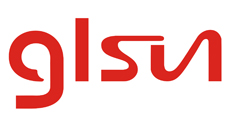The Versatile Applications of EDFA
2025-02-08
Erbium-Doped Fiber Amplifiers (EDFAs) have revolutionized the field of optical communications by providing efficient and reliable amplification of optical signals. This article explores the diverse applications of EDFA, focusing on its role in extending relay distances, its integration with Wavelength Division Multiplexing (WDM) technology, its synergy with optical soliton technology, and its application in Cable Television (CATV) systems.
Extending Relay Distances with EDFA
One of the primary applications of EDFA is in extending the relay distance in optical communication systems. Traditional optical communication systems require frequent regeneration of signals due to attenuation over long distances. EDFAs amplify the optical signal directly, eliminating the need for optical-to-electrical conversion and reducing the number of regenerators required. This results in significant cost savings and improved system reliability.

EDFAs operate by doping optical fibers with erbium ions, which can be excited by a pump laser to amplify the signal. The amplification process is highly efficient, with gains of up to 30-40 dB, making EDFAs ideal for long-haul communication systems. The use of EDFAs has enabled the deployment of transoceanic and transcontinental optical fiber links, connecting remote locations with high-speed data networks.
EDFA and Wavelength Division Multiplexing (WDM)
The combination of EDFA and WDM technology has further enhanced the capacity and efficiency of optical communication systems. WDM allows multiple wavelengths to be transmitted simultaneously over a single optical fiber, significantly increasing the data-carrying capacity. EDFAs can amplify multiple wavelengths simultaneously, making them an ideal match for WDM systems.
In Dense Wavelength Division Multiplexing (DWDM) systems, EDFAs provide uniform gain across a wide range of wavelengths, ensuring that all channels are amplified equally. This uniformity is crucial for maintaining signal integrity and minimizing crosstalk between channels. The integration of EDFAs with DWDM has enabled the deployment of high-capacity optical networks capable of supporting the ever-increasing demand for bandwidth.
EDFA and Optical Soliton Technology
Optical solitons are special types of optical pulses that maintain their shape and velocity over long distances due to a balance between dispersion and nonlinear effects. EDFAs play a crucial role in soliton-based communication systems by providing the necessary amplification to maintain soliton stability.

In soliton transmission, EDFAs are used to compensate for the loss of soliton energy due to fiber attenuation. The amplification process must be carefully controlled to avoid distorting the soliton pulse shape. EDFAs provide the precise amplification needed to maintain soliton integrity, enabling error-free transmission over long distances. The combination of EDFA and soliton technology has led to the development of ultra-long-haul communication systems with unprecedented transmission distances.
EDFA in Cable Television (CATV) Systems
EDFAs have also found applications in CATV systems, where they are used to amplify optical signals for distribution to subscribers. Traditional CATV systems use electrical amplifiers to boost signal strength, but these amplifiers introduce noise and distortion. EDFAs, on the other hand, provide noise-free amplification, improving the quality of the transmitted signals.
In Hybrid Fiber-Coaxial (HFC) networks, EDFAs are used to amplify the optical signals before they are converted to electrical signals for distribution over coaxial cables. This hybrid approach combines the high capacity of optical fibers with the extensive reach of coaxial cables, providing a cost-effective solution for delivering high-quality video and data services to subscribers.
EDFAs have become an indispensable component in modern optical communication systems, offering a range of applications that enhance system performance and capacity. From extending relay distances to integrating with WDM and soliton technologies, and improving CATV systems, EDFAs continue to drive innovation in the field of optical communications. As the demand for high-speed data networks continues to grow, the role of EDFAs in enabling efficient and reliable optical communication will become even more critical.







